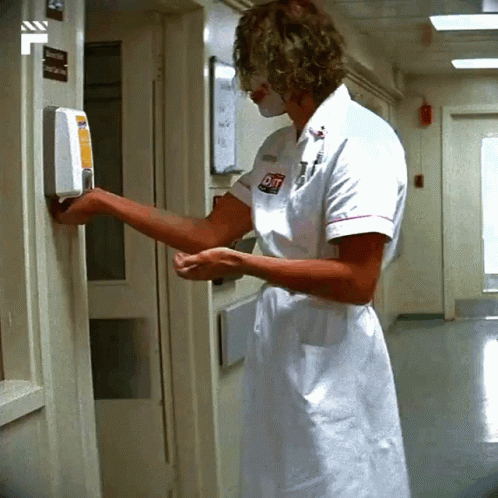🧪 The Origins: Dr. Ignaz Semmelweis and the Fight Against "Childbed Fever"

In the 1840s, Dr. Ignaz Semmelweis worked in the maternity clinic at the Vienna General Hospital. He noticed something deeply troubling:
Women who gave birth in the doctor-staffed ward were dying of childbed fever at rates two to three times higher than those in the midwife-staffed ward.
Desperate to understand why, Semmelweis started investigating. His breakthrough came when a colleague died from an infection after cutting himself during an autopsy. Semmelweis theorized that doctors were carrying “cadaverous particles” on their hands from the morgue to the delivery room.
He implemented a simple rule:
Doctors must wash their hands with chlorinated lime water before examining patients.
The result?
Death rates dropped from 18% to 1%.
This was revolutionary, yet few believed him. He had no way of explaining how the “particles” caused disease—germ theory hadn’t yet been discovered. His work was dismissed as unscientific, and he was mocked by his peers.
Despite his success, Semmelweis was eventually forced out of the medical community. He died in 1865, long before his ideas were validated.

🛑 The Medical Community’s Reluctance to Accept Change
You might wonder: Why didn’t doctors immediately embrace such a life-saving practice?
At the time, medicine was dominated by tradition and status, not evidence. Suggesting that doctors themselves were responsible for spreading deadly infections was seen as offensive and humiliating. Many believed that diseases like childbed fever were caused by “bad air” or “spontaneous generation,” not by something invisible on their hands.
Semmelweis’s work was also published poorly and lacked widespread advocacy. Without the scientific backing of germ theory, his discovery was too far ahead of its time to be accepted.
It would take another two decades before the scientific community began to recognize that tiny, invisible organisms—germs—were the true culprits behind infectious disease.
🦠 Germ Theory Changes Everything: Pasteur, Lister, and the Turning Point
In the 1860s and 1870s, two key figures finally provided the evidence that Semmelweis lacked:
- Louis Pasteur demonstrated that microorganisms cause fermentation and disease, laying the foundation for germ theory.
- Joseph Lister applied Pasteur’s findings to surgery, using carbolic acid to sterilize instruments and clean wounds, dramatically reducing infections.
With these discoveries, the medical world finally began to understand that handwashing wasn’t just a polite gesture—it was a medical necessity.
By the early 20th century, hospitals began adopting strict hand hygiene protocols, saving millions of lives in the decades that followed.
🧼 The Role of Handwashing Today
Today, handwashing is recognized as one of the most effective and affordable public health tools in the world.
In healthcare settings, hand hygiene is essential for:
- Preventing hospital-acquired infections
- Protecting immunocompromised patients
- Reducing the spread of antibiotic-resistant bacteria
In everyday life, handwashing reduces:
- Respiratory illnesses like colds, flu, and COVID-19
- Gastrointestinal infections like norovirus and salmonella
- Skin and eye infections
Despite all we know, studies show that many people still don’t wash their hands properly or often enough—especially after using the restroom, handling food, or coughing into their hands.
🧠 Why This Matters
The story of handwashing is a powerful reminder that the simplest solutions are often the most powerful—and that science doesn’t always win right away.
Semmelweis faced ridicule, rejection, and personal tragedy, yet his work lives on as one of the greatest public health breakthroughs of all time.
In a world still facing pandemics, antibiotic resistance, and global health challenges, hand hygiene remains one of our best defenses.
Here is a video with Dr. Mike going over the history of handwashing and medicine!
🌟 Spotlight on the Future
- Global campaigns by the World Health Organization continue to promote hand hygiene in healthcare, schools, and public spaces.
- Technological innovations, like motion-sensing sinks and compliance-tracking systems in hospitals, aim to make hand hygiene more consistent.
- Behavioral science is helping us understand why people skip handwashing—and how to change that through better education and habit formation.
😲 Did You Know?
- The average person touches their face 16–23 times per hour, making handwashing even more important.
- The CDC recommends scrubbing your hands for at least 20 seconds—about the time it takes to hum the "Happy Birthday" song twice.
- Proper handwashing can reduce diarrheal diseases by up to 40% and respiratory illnesses by up to 20%.
🧠 Reflection Questions
- Why do you think it took so long for doctors to accept handwashing as a medical necessity?
- What modern health practices might we be overlooking or resisting today?
- How can we encourage better hand hygiene in our communities and workplaces?
👋 Final Thoughts
From a ridiculed idea to a global health standard, the story of handwashing is far from over. Each time you turn on the faucet and reach for the soap, you’re participating in one of the most powerful public health actions in history. And that’s something worth celebrating.
📚 References
Centers for Disease Control and Prevention. (2024). History of Handwashing. https://www.cdc.gov/handwashing/history.html
World Health Organization. (2024). Hand Hygiene Saves Lives. https://www.who.int/campaigns/world-hand-hygiene-day
History.com Editors. (2020). The Doctor Who Championed Hand-Washing and Lost His Mind. https://www.history.com/news/hand-washing-genius-ignaz-semmelweis
📲 Keep exploring with us:
- Instagram: @thevarrockstreetjournal
- TikTok: @varrock.street.jo
